Christ the Eternal Tao
Содержание
Introduction: Lao Tzu and the Ancient Greeks 1. The Tao/Logos 2. Hieromonk Seraphim and Gi-ming Shien 3. Modern Syncretism vs. Ancient Apologetics A Note on the Chinese Seals Part I. Christ the eternal Tao A Note on the Nine Enneads The First Ennead: In the Beginning Was the Way Chapter 1 Chapter 2 Chapter 3 Chapter 4 Chapter 5 Chapter 6. Chapter 7 Chapter 8 Chapter 9 The Second Ennead: The Coming of the Way Chapter 10. Chapter 11 Chapter 13. Chapter 14 Chapter 15 Chapter 16 Chapter 17 Chapter 18 The Third Ennead: The Opening of the Way Chapter 19. Chapter 20 Chapter 21. Chapter 22 Chapter 23 Chapter 24 Chapter 25 Chapter 26 Chapter 27 The Fourth Ennead: The Emptying of the Way Chapter 28 Chapter 29 Chapter 30 Chapter 31 Chapter 32 Chapter 33 Chapter 34 Chapter 35 Chapter 36 The Fifth Ennead: The Way of Quenching Desire Chapter 37 Chapter 38 Chapter 39 Chapter 40 Chapter 41 Chapter 42 Chapter 43 Chapter 44 Chapter 45 The Sixth Ennead: The Way of Humility and Forgiveness Chapter 46 Chapter 47 Chapter 48 Chapter 49 Chapter 50 Chapter 51 Chapter 52 Chapter 53 Chapter 54 The Seventh Ennead: The Way of Perfect Love Chapter 55 Chapter 56 Chapter 57 Chapter 58 Chapter 59 Chapter 60 Chapter 61 Chapter 62 Chapter 63 The Eighth Ennead: The Way of Suffering Chapter 64 Chapter 65 Chapter 66 Chapter 67 Chapter 68 Chapter 69 Chapter 70 Chapter 71 Chapter 72 The Ninth Ennead: Following the Way of Truth Chapter 73 Chapter 74 Chapter 75 Chapter 76 Chapter 77 Chapter 78 Chapter 79 Chapter 80 Chapter 81 Part II. The unfolding revelation of the Tao in human history Chapter One: Departure from the Way 1. Pristine Simplicity 2. The Primordial Departure Knowledge of God in the Earliest Historical Cultures Chapter Two: Seeking the Way of Return 4. Lao Tzu and Confucius 5. The Tao 6. Mysterious Teh 7. The Oneness of the Tao 8. «Nothingness» 9. The Benevolence of the Tao 10. The Mystery of «I AM» 11. The Paradox of Personhood and Selflessness The Consequences of an Incomplete Understanding of God 13. The Mystery of the Triad 14. The Incomprehensibility of the Triad 15. Foreshadowings of the Triadic Mystery 16. The Expectation of the Ancient Hebrews Chapter three. When the way became flesh 17. Christ as «I AM» 18. The Teh of Christ 19. The Christ of Lao Tzu 20. Christ’s Revelation of the Triad 21. Christ’s Revelation of the God of Love 22. Christ's Law of Love 23. Christ’s Revelation of the Selflessness of the Tao Part III. Uniting oneself to the incarnate Tao through watchfulness and prayer Chapter One: Changing the Eye of the Soul 1. New Possibilities The Soul and the Spirit (Shih-Shen and Yüan-Shen) 3. The Spirit as Master 4. The Life of the Ego 5. Metanoia 6. Forgiveness Chapter Two: Nurturing the Seed of Uncreated Teh 7. The Open Path to Perfect Union 8. Implements of Teh 9. The Seed of Divine Energy 10. Cultivating the Seed 11. The Created and the Uncreated Chapter Three: Watchfulness 12. Continuous Metanoia 13. Watchfulness and Metanoia 14. Watchfulness and Prayer 15. Going Within and Separating from Thoughts 16. Wrong Struggle and Right Struggle 17. Defocusing from Thoughts 18. Thoughts and Evil Spirits 19. «Deal with It Before It Happens» 20. Facing Oneself 21. Distrusting Thoughts 22. Judgmental Thoughts 23. «Take No Thought» 24. Non-Action 25. Healing through Non-Action 26. The True Source of Knowing 27. The Spirit as Light 28. The Misuse of Watchfulness 29. Hearing the Wordless Word Chapter Four: Prayer to the Tao 30. Personal Communion 31. Words Are Only a Support 32. Confessing Lapses 33. «Self-forgetting» in Prayer 34. «Non-Action» in Prayer 35. The Power of Direct Appeal 36. The Jesus Prayer 37. Precautions in Doing the Jesus Prayer The Wrong Use and the Right Use of the Jesus Prayer 39. The Jesus Prayer and Intrusive Thoughts 40. The Jesus Prayer as Repentance 41. No Idols 42. Levels of the Jesus Prayer Chapter Five: Laying a Foundation 43. Count the Cost 44. Cutting off Distractions 45. Putting to Death the Ego Chapter Six: The Union of Mind and Heart 46. The Heart (Hsin) 47. Spiritual Feeling in the Heart 48. Awareness in the Heart 49. The Mind as Sentinel Over the Heart 50. The Union of Mind and Heart through Grace 51. Finding and Living from One’s Center 52. Lao Tzu and Christ on the «Center» Chapter Seven: Praying from One’s Center 53. Persistence 54. Wordless Prayer of the Mind and Heart 55. On Natural Thoughts Which Arise During Prayer 57. Reliance on Techniques 58. Premature Descent into the Heart 59. Do Not Try to Measure Your Progress 60. At the End of Prayer Times Chapter 8: Emptiness 61. Self-Forgetting Love 62. The Abyss of Humility 63. The Birth of the Logos 64. The Darkness of Divestiture 65. The Agony of Repentance Chapter Nine: Illumination 66. The Vision of Uncreated Light 67. Total Illumination «God Became Man That Man Might Become God» 69. Re-creation of the Spirit through Christ 70. Prerequisites for Deification 71. Personal Union 72. The Progression of Eternity Epilogue: Re-creation of the Spirit by Teh 1. A Contemporary Account of Deification 2. What Is Uncreated Light? 3. Hesychasm 4. Fr. Benedict Ghius 5. A Childhood Experience 6. The First Experience in Prison 7. The Second Experience in Prison 8. The Gift of Light 9. The True Meaning of Salvation Appendix One: Eastern Orthodoxy in China The First Orthodox Mission 2. Priest Mitrofan Chang 3. The First Chinese Orthodox Martyrs 4. The Chinese Orthodox Church after 1900 5. The Church under Persecution 6. Hope for the Future 7. Toward a New Phase of Chinese Orthodoxy Appendix Two: A Letter of Hieromonk Seraphim Rose to a Spiritual Seeker Commentary on the Nine Enneads of Part I: «Christ the Eternal Tao» About the Author, Calligraphers and Seal Carver Bibliography
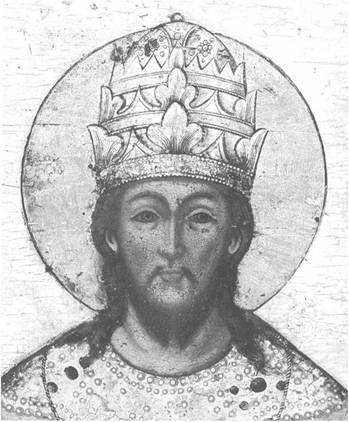
Icon of Christ, «the King of Kings and Lord of Lords» (Revelation 19:16). This icon from eighteenth-century Russia shows the artistic influence of Russiás neighbor, China.

Dedicated to the 222 Chinese Orthodox Martyrs, who were slain for Christ during the Boxer Rebellion in Beijing in the year 1900.
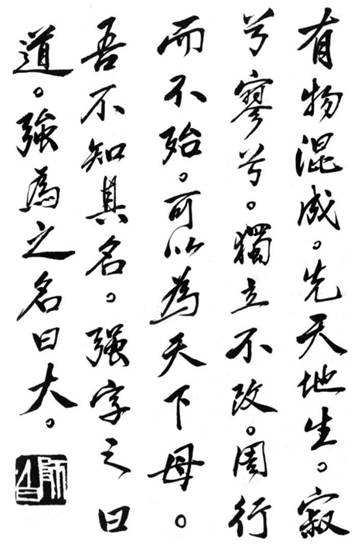
There exists a Being undifferentiated and complete,
Born before heaven and earth.
Tranquil, boundless,
Abiding alone and changing not,
Encircling everything without exhaustion.
Fathomless, it seems to be the Source of all things.
I do not know its name,
But characterize it as the Tao.
Arbitrarily forcing a name upon it,
I call it Great....
Tao Teh Ching, chapters 25 and 4
(Translated by Gi-ming Shien and Eugene Rose.)

In the beginning was the Tao,
And the Tao was with God,
And the Tao was God.
The same was in the beginning with God.
All things were made by Him;
And without Him was not anything made that was made.
In Him was life, and the life was the light of men.
And the light shines in darkness,
And the darkness comprehended it not....
He was in the world, and the world was made by Him,
And the world knew Him not....
And the Tao became flesh,
And dwelt among us,
And we beheld His glory...
The Gospel of John, chapter 1
(Translated from a Canton edition of the New Testament, published in China in 1911 by the American Bible Society.)
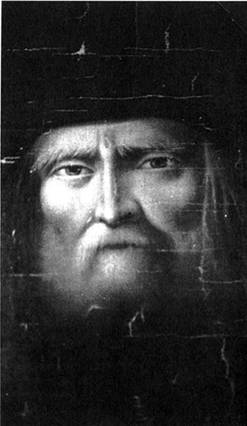
St. Seraphim of Sarov, Russia (1759–1833): detail of a portrait painted from life. About St. Seraphim’s illumination by Uncreated Teh, see p. 390.
THOUGH NOT with the same power as in the people of God [the Hebrews], nevertheless the presence of the Spirit of God also acted in the pagans who did not know the true God, because even among them God found for Himself chosen people. Such, for instance, were the virgin prophetesses called Sibyls who vowed virginity to an unknown God, but still to God the Creator of the universe, the all-powerful ruler of the world, as He was conceived by the pagans. Though the pagan philosophers also wandered in the darkness of ignorance of God, yet they sought the Truth which is beloved by God; and on account of this God-pleasing seeking, they could partake of the Spirit of God, for it is said that the nations who do not know God practice by nature the demands of the law and do what is pleasing to God [cf. Romans 2:14]....
So you see, both in the holy Hebrew people, a people beloved by God, and in the pagans who did not know God, there was preserved a knowledge of God – that is, a clear and rational comprehension of how our Lord God the Holy Spirit acts in man, and by means of what inner and outer feelings one can be sure that this is really the action of our Lord God the Holy Spirit and not a delusion of the enemy. That is how it was from Adam’s fall until the coming in the flesh of our Lord Jesus Christ into the world.
St. Seraphim of Sarov

Lou Shibai, The Peaks of Huangshan Mountain.
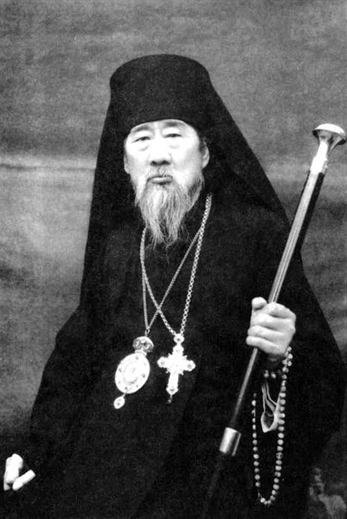
Bishop Symeon Du of the Eastern Orthodox Christian Church in Shanghai. (See p. 437.)
Foreword
Today, when thirty thousand people in China are becoming Christians every day – a number unprecedented in the history of the world – a growing number of people in the West are turning away from their Christian roots and becoming interested in ancient Chinese religion. Why is such a reversal taking place? Clearly, it is because many Chinese are now finding a true experience of Christ in the face of religious persecution by the communist government, while churches in the affluent, free West are losing an awareness of the essence of Christ and His teaching.
In modern Western society, many people turn away from the Christianity of their formative years because they find its truths smothered under an unreal kind of religiosity. They see that the people in the churches are not changing and becoming better, but rather are comforting themselves and each other in their unregenerate state. They find that the spirit of the Western churches is, at its core, little different from that of the world around them. Having removed from Christianity the Cross of inward purification, these churches have replaced a direct, intuitive apprehension of Reality and a true experience of God with intellectualism on the one hand and emotionalism on the other.
In the first case, Christianity becomes something that is acquired through rote learning, based on the idea that if you just get the words right – if you just memorize the key Scripture verses, intellectually grasp the concepts and repeat them, know how to act and to speak in the religious dialect of your particular sect – you will be saved. Christianity then becomes a dry word-based religion, a legalistic system, a set of ideas and behaviors, and a political institution that operates on the same principles as the institutions of this world.
In the second case, the Western churches add the element of emotionalism and enthusiasm in order to add life to their systems, but this becomes just as grossly material as religious legalism. People become hypnotized by their self-induced emotional states, seeing a mirage of spiritual ascent while remaining bound to the material world.
This is not direct perception of Reality; it is not the Ultimate. It is no wonder, then, that Western spiritual seekers, even if they have been raised in Christian homes, begin to look elsewhere, into Eastern religions. It is also not surprising that so many are turning to the profound and enigmatic work of pre-Christian China, the Tao Teh Ching. In reading Lao Tzu, they sense a spirit similar to that of Jesus Christ. They see a poetic glimpse of Christ in Lao Tzu – a reflection that is faint, but somehow still pure. And to them, this faint but pure image is better than the more vivid but tarnished image of Him that they encounter in much of what now passes for Christianity.
In the traditions of ancient China, the Western spiritual seeker can learn the basics of spiritual life which the churches failed to teach him: how to be free of compulsive thinking and acquire stillness of thoughts, how to cut off desires and addictions, and how to conquer negative emotions.
Some are satisfied to stay on this path. In others of us, however, a strange thing occurs. In one sense, we are making more spiritual progress than ever before, but at the same time we are inexplicably unfulfilled. In our newfound apprehension that there is something more than the realm of the ego and the passions, we become aware that there must be something even more – more than even the authentic Chinese tradition supplies. And we find that although we have left behind the Western Christian confessions, we cannot leave Christ behind.
Why is this? Some would say that, as Westerners, we have Christianity in our genes, as it were. But we would say more: that, even though we were exposed to an attenuated form of Christianity, still we were exposed to «the Christ Ideal» – as the great transmitter of Native American religion, Ohiyesa, called it. The very seed of the idea of Jesus Christ – God Who became flesh, Who emptied Himself into the creation, Who spoke the words that He spoke, Who died on the Cross to restore mankind to its original nature and thus to Paradise – is so powerful in itself that the tales and teachings of all the world’s religions pale in comparison. But if Christ is so much greater as to be in a class by Himself, why is the Western religion based on Him in such a sorry condition? Why is it so externalized, materialistic and worldly? Surely, we believe, there must be more to Christ than that.
But it is more than just the idea of Christ that works in our souls. Christ Himself is at work in them. Having heard the revelation of Christ, we are now responsible for it, and now He helps us fulfill that responsibility. He helps us come to Him.
Our path to a true experience of Christ is often long and arduous. We in the modern West have become too sophisticated, too complex. When people talk to us of Christianity, we’ve heard it all before: we’ve already become conditioned to react in certain ways to Christian words and concepts. The reflexes they evoke in us are sometimes connected with an emotional trauma from the past that causes us to either cling to them or rebel against them. Clinging and rebellion are only two sides of the same coin: both are predicated on emotional involvement in words and concepts which claim to be Reality itself, but are not.
Moreover, these Christian words and concepts we have learned must vie with thousands of others from all the world’s religions and philosophies, which have now become available to us sophisticated moderns. This presents us with a paradox. Knowing that differing religions and philosophies cannot all be true at the same time, we tend to relativize truth. That is what our logical minds tell us to do. But, in the final sense, we are always wrong when we trust our logical minds.
How do we get past this? How do we become uncomplicated and unsophisticated? Can we simply unlearn all that we have learned?
No, we cannot, but what we can do is to separate ourselves from it in order to look at it with new eyes. For us Westerners to truly enter into the ancient Christian transmission and catch the essence of Christ’s teaching, it is necessary for us to crucify our rationalizing minds and rise above the level of thought and emotion. For a society founded on Descartes» proposition «I think, therefore I am», this of course means a kind of suicide; and it is to precisely such an ego-death that Christ calls us. Contemporary Western Christianity trains us how to think and what to think; whereas Christ Himself, as did Lao Tzu before Him, taught us how not to need to think.
The only way to get past a merely external apprehension of religious words and concepts is to seek, without compromise and self-pity, the Reality behind them. If our rapidly diminishing Western Christendom has become too jaded by intellectualized or emotionalized religion to see the essence of Christianity, then we must, as it were, start over.
In this book we will look at Christ and his message as would Lao Tzu, who, although he lived five hundred years before Christ, intuitively sensed the presence of Christ in creation. We will seek to become like Lao Tzu’s image of «the infant that has not yet smiled», who has not yet learned to react to words and ideas, who knows without knowing how it knows. And then, from the point of Lao Tzu’s simplicity, innocence and direct intuition, we will receive the message of Christ from a new source: not from the modern West – which has distorted it into thousands of conflicting sects and philosophies – but from the ancient Christian East, which has transmitted to modern times the essence of Christ’s teaching in a way that resonates with the teaching of Lao Tzu, not denying Lao Tzu’s intuitive realizations but bringing them to a new dimension.
In the Chinese tradition, the direct transmission of wisdom from teacher to disciple is of vital importance. The Eastern Christian Church has that transmission all the way back to Christ Himself: an unbroken historical line of development with no fundamental shift in viewpoint such as happened in the West after the Schism of A.D. 1054.
In the Christian East, we find clear guidance on acquiring stillness, overcoming the passions, dealing with thoughts, and cultivating the virtues, as well as precise teachings on spiritual deception which guide us more safely and surely on the path to God. Most important of all, we find the Undistorted Image of Christ which we had not beheld in other churches. In Him, Whom the ancient Akathist hymn calls the «Sunrise of the East»,1we find the Beginning and End of our soul’s desire, and the door to eternal life2.
In the mystical and contemplative tradition of Eastern Christianity– which we will discuss in Part III of this book – we are able to go beyond any realizations we may have had in the Eastern religions. The end of this is deification, total illumination, perfect communion with our Creator, and the birth of Christ Himself within us.
In Christ is the fulfillment of the expectation of the ancients. Christ does not abolish what came before Him; instead, He brings it to fulfillment by disintegrating the false and upholding the true in the Light of His ultimate revelation. The truths in all ancient religions and philosophies shine forth in this Light, but they are not this Light, nor are they equal to it. If seen with the eyes of faith, they can bear witness to the Light of revelation, just as can the souls of today’s seekers when, through the eyes of Lao Tzu, they find and behold the Undistorted Image of Christ, shining with all His brilliance in the ancient Christian East.
Let us now look through those eyes. To the people who lived before Christ, Lao Tzu showed how to rise above thoughts and emotions so that they could know of the Mind Who is beyond thought, hear the Word Who makes no sound, and follow the Tao Who leaves no footprints. To us who have come after Christ, Lao Tzu can do the same so as to help us begin the path to a true, non-conceptual experience of Jesus Christ, of Him Who is the incarnation of the Logos of the Greeks, the Wakan Tanka of the Native Americans, and the Tao of the God-seeking ancient Chinese.

Members of the Eastern Orthodox Christian Church in Beijing, 1935. Photograph taken on the 250th Anniversary Jubilee of the Beijing Mission. In the middle is Priest Nikolai See, who came from Shanghai for this occasion. The people are in Chinese costume of various colors – mainly blue. For a brief history of Eastern Orthodoxy in China, see Appendix 1.
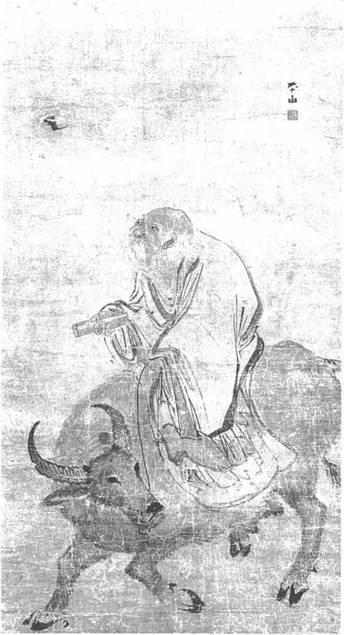
Chang Lu (A.D. 1490–1563), Lao Tzu Riding a Water Buffalo. According to Chinese tradition, Lao Tzu, after writing the Tao Teh Ching in his old age, left the world riding a water buffalo. He travelled through Hanku Pass to the Chungnan Mountains in the west, where he became a hermit in the wilderness.
* * *
Akathist to Our Sweetest Lord Jesus Christ, Kontakion 10.
